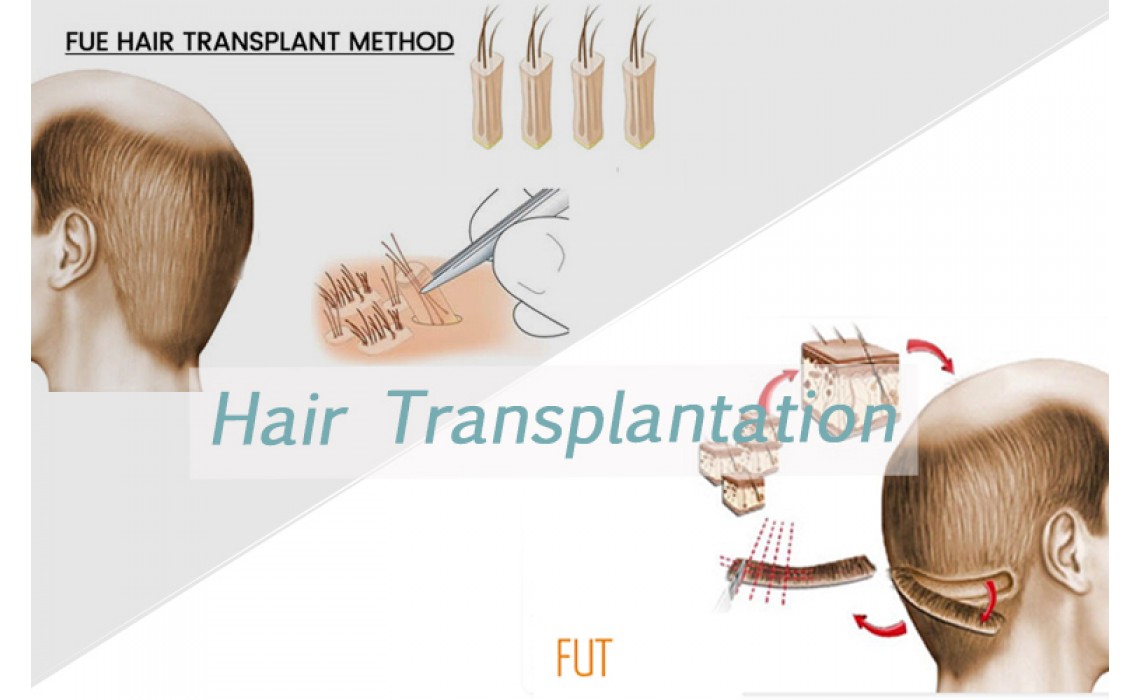
What’s the difference between FUT with FUE about hair transplant?
The human hair is also transplantable like other tissues of the human body. Hair transplantation is a special instrument to completely cut the tissue around the hair follicle, from the scalp in situ, and then transplanted to a position where hair is required and ready to receive the hair condition, called hair transplantation.
Principle of hair transplant
The hair follicles in the hindbrain of the human body are taken as the origin, and after being separated into single or multiple follicular units, the follicular unit is transplanted to the parts to be transplanted, such as the head, the eyebrows, the eyelashes, the beard, the chest, through fine microsurgical techniques. Eyelashes, genitals, etc., let them survive and grow naturally in new parts, so as to achieve the purpose of repairing the distribution density of local hair to achieve an aesthetic effect. In fact, hair transplanting is also a kind of “demolition of the east wall to make up the Western Wall”, to achieve a cover-up, visual hair lush effect.

Internationally recognized hair transplant technology
(1) FUT
Monomer hair follicle cultivation and regeneration technology, concentrated hair follicle extraction from the occipital part of the occipital region, using a patented fine device monomer transplantation.
Suitable for: large or serious hair loss area, up to 3,000 units at a time, leaving a thin line of scars in the postoperative area.
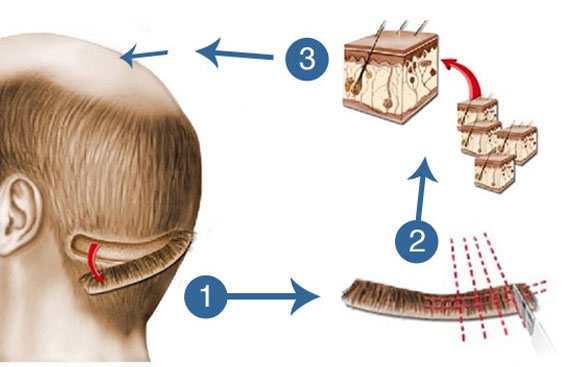
(2) FUE
The non-knife hair transplantation technique uses a micro-free device to extract the hair follicles from the posterior occipital region in a discrete manner, and transplants the hair cells to the hair loss site according to the direction of hair growth. Suitable for: small hair loss area or the pursuit of perfection, a single extraction of hair follicles, no stitching and stitching, faster healing, no traces, can take more than 3,000 units at a time.
The hair transplant technology used in China has FUT and FUE first to compare the differences of the following various techniques in pre-operative detection, hair-taking area, hair-picking method and hair-planting method.
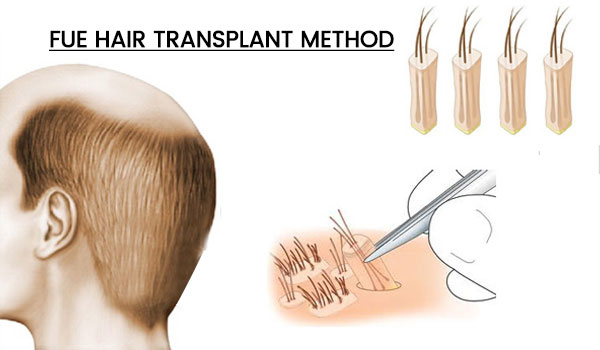
Three steps of hair transplantation
First of all: take a fusiform flap in the posterior occipital region, then suture the subcutaneous decompression, and suture the outer layer continuously. There is no obvious scar after the wound is healed, leaving only a thin scar hidden in the hair. Since the hair follicle tissue that is traversing has only a small amount of hair in the longitudinal direction, there is no obvious change in the appearance of the original posterior occipital hair.
Secondly: hair follicle separation: the removed flap is divided into several small transplanting units, also called transplanted embryos, without destroying the hair follicles. Each transplanted embryo contains 1-3 hair follicles (the size of the transplanted embryo is determined according to the surgical method) This process is very strict, requiring medical staff to be extremely patient and careful, otherwise it will destroy a part of the hair follicle and cause damage to the patient.
Finally: hair follicle planting: Do some micro-incision or perforation in the bald area to implant the transplanted embryo into the skin. This process determines the appearance after surgery. Since the number of hair follicles is limited, the limited distribution of hair follicles is artistically distributed to the top of the head in order to achieve the best visual effect, especially the hair follicle distribution is very important, otherwise it will not look good even if the hair grows.

Hair growth effect
FUT———-(follicle unit transplant), extracting multiple diamond-shaped flaps from the back of the brain, separating the hair follicles and transplanting them to the non-infected area.
Advantages: Suitable for large or severe hair loss area, up to 3000 units at a time, the effect is ideal. Among the three, the price is the lowest and the effect is ideal. Disadvantages: A palmprint size scar is left in the donor area.
FUE—–(follicle unit extration) due to a single extraction of hair follicles, a single planting of hair follicles, the wound area is small, so after the operation, after the blood stasis fades, the whole body can not see any scars, after 6-9 months, the hair can grow To the length of the original hair. After hair transplantation, there will be a small change in the number of hair follicles, and the number of hair will change slightly, but the eyes cannot distinguish.
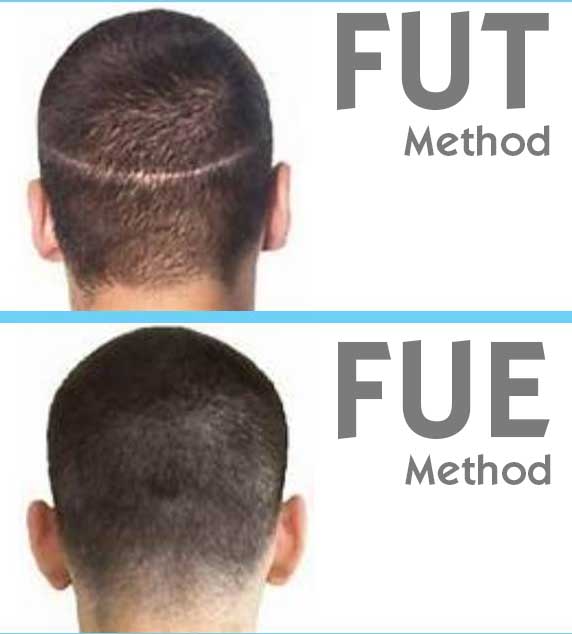
The effect of hair transplantation is guaranteed to be the first. According to the newer technology, the surgical method is to remove a fusiform flap with healthy hair follicles and hair shaft from the posterior occipital region of the autologous brain after local anaesthesia. After the treatment, the healthy hair follicles and the embryos are separated, and then transplanted to the desired parts according to a certain rule. After several months of survival, development and growth, a permanent natural hair group can be formed to reach the purpose of covering the bald area. And really no trace.
Secondly, it is worth noting that the hair growth effect should be avoided within two weeks after surgery, so as to avoid hair damage in the transplanted area, which may affect the effect. Because vigorous exercise will increase the blood circulation of the scalp, which may cause wound bleeding in the transplanted area. Avoid strenuous exercise or physical contact within three weeks of surgery.
Third, the hair survival rate and surgical outcome of hair transplantation are directly related to the doctor’s clinical skills and the level of fineness of the operation. The poor technique not only fails to achieve the therapeutic purpose, but also wastes the precious hair residual supply area. Therefore, it needs to be carried out. Patients with hair transplants should go to a regular hospital and seek medical treatment with a wealth of clinical experience to achieve a safe, ideal hair transplant effect.
Four basic characteristics of ideal hair for unit hair
(1)Elasticity (2) Soft (3) Tight structure (4) Black
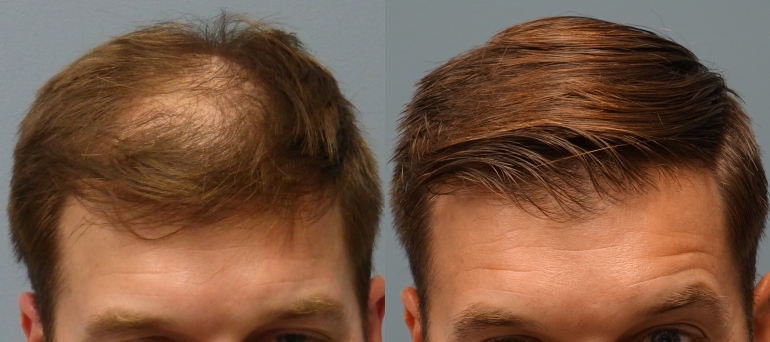
Hair transplant characteristics
The hair is naturally moisturized, bright and feminine, and easy to comb.
Mechanism: Good blood circulation, normal moisturization and formation of a layer of this acidic protective net, oil secretion is also normal.
Care: Use a mild, high-moisture product to protect existing hair.
Recommendation: Wash 3-5 times a week.
Dry hair
Features: dry hair, tightening, sensitive and itchy, hair tarnish, lack of elasticity, lifeless, and make hair quickly fall off
Mechanism: due to lack of oil secretion, external influences, such as excessive use of hairdressing appliances, improper hair, dyeing lanes caused by keratin loss.
Nursing: Use moisturizing shampoo and conditioner. When using, gently massage the scalp and hair. Use mild hair and hair dye products or reduce the number of times. Use repair products regularly to repair damaged structures and strengthen protection. Make your scalp and hair healthy.
Oily scalp and hair
Characteristics: The hair is too greasy and unclean, loses its elasticity, becomes loose, difficult to shape, and does not last long.
Mechanism: excessive oil secretion, diet and nutrition: such as the absorption of too much food such as sweet sugar, starch or fat.
Care: Remember not to: 1. Strongly rub and massage the scalp. 2, with too strong shampoo, use a proprietary balanced oil shampoo products. 3, flushing water is not available, only warm water can be used. After shampooing every day, use a live hair lotion that tightens the scalp and controls the secretion of oil.
Abnormal hair loss
Causes of hair loss:
(1) External factors:
- Take the medicine. 2. Bacterial infection. 3. Shampoo is too strong. 4. Oily dandruff blocks the pores. 5, blowing, dyeing, electricity, drifting improperly.
(2) Intrinsic factors:
- Genetics, age growth. 2, lack of nutrition, lack of vitamins, amino acids and so on. 3. Hair cells and hair follicles are injured. 4, vascular disorders. 5, endocrine disorders, hormone secretion is not coordinated.
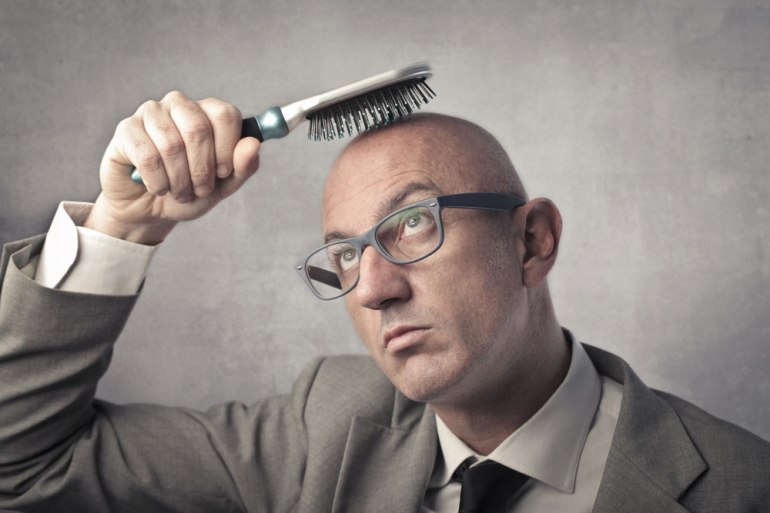
Prevention of hair loss:
Keep the scalp clean, wash your hair frequently, promote capillary patency, massage more, promote blood circulation, rest, fully absorb nutrients, and take more vitamins A, D, B6, etc. The scalp is often protected by scalp nutrition.
Recommended use: Anti-dandruff and anti-itch type, hair growth and anti-offset, nutrient-care shampoo care products. (For information on hair loss and treatment products, please visit the website for detailed information on hair loss pages.)
Advantages of hair transplant surgery
Hair transplant characteristics
Design the hairline according to the characteristics of the person’s head shape, face type, temperament and age. Transplanted according to the growth direction and distribution of normal hair. The transplant area will not leave any marks or scars. The transplanted hair is no different from the surrounding hair and grows with the growth of the surrounding hair.
One day before hair transplant
For the cleansing of the scalp and hair, take a shower the night before and the morning of the hair transplant. Wash your hair with shampoo carefully one day to keep your hair clean.
Precautions on the day of hair transplant
Dressing: Large, comfortable, soft front button or zippered clothing, avoid wearing inconvenient pullovers or sweaters. Because the surgical transplant area can’t be touched 3 days after surgery, try not to wear the hooded clothes.
Diet: For normal diet, do not fasting, avoid alcoholic drinks and greasy foods. Do not try foods that you have not eaten on the day of surgery to avoid discomfort such as allergies or indigestion.
Patients with wigs should remove the wig and wash the hair.
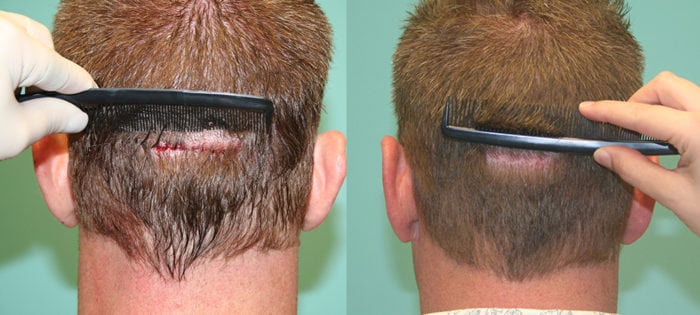
Hair transplant complications
- Blood seepage After the wound and transplant site, there is mild oozing, which is a normal phenomenon. Use a sterile gauze to gently compress the oozing site for 3 to 5 minutes to stop bleeding or use a hemostatic drug. Avoid irritating foods before and after surgery, ban alcohol, stop taking aspirin, and vitamin E, blood circulation and other drugs; it will help to avoid oozing.
- Infection In the operation of the hair transplant, the principle of aseptic operation is followed. After the antibiotics are used, there is basically no infection. If you have discomfort or pain in your wound, you can take 1 tablet orally, and take 4 hours each time.
- Swelling Some patients with severe hair loss will have mild edema on the forehead, nose, etc. on the third or fourth day after surgery, which is normal. To reduce swelling, you can use 2 to 3 pillows to raise your head when sleeping for the first three days after surgery. Applying ice packs to the forehead and the unimplanted areas on both sides of the head can reduce edema and generally recover within a week. No special treatment is required; note: Please do not apply the ice pack to the transplant.
- The reaction between endogenous hair and foreign body The cause is that the useless hair follicles are not removed from the preparation of the hairy embryos, causing the hair to forcibly grow into the subcutaneous tissue, stimulating the formation of foreign body reaction, and it is important to prevent;
- Epidermal cysts;
- Hair loss caused by transient surgery, also known as end-stage hair loss;
- Scars The hair loss will not leave obvious scars, and the occipital donor area will leave a linear scar, which is not obvious when the hair is blocked;
- The operating area is dull or numb and generally recovers on its own;
- Partial necrosis of the transplanted hair
After the above description, are you get it about hair transplant? It’s really hurt to do hair transplant, so pls take good care of friends and families around you, those have bald or bare hair, they need more care and courage in the feeling.
Like, drop comments and share if you like this article, thanks for your support and keep follow our blogs, should you have any question, feedback or inquiry, welcome to contact by:
Link to glamfields.blog
Related products
Production DescriptionDouble Negative Ions: The GLAMFIELDS hair straightening brush seals the hair cuticles and locks in your hair's natural moisture, to eliminate frizz, split ends, and knotting and adds shine, repairing the hair quality of harm, making a smooth, silky, natural lustrous look.Advanced MCH technology: Characterized by Heat Quickly, Save Energy, More Durable, Lasts Longer,it heats up within 30 seconds after boot, wider and denser comb tooth also decreases the time of straightening.16 Heating Modes: 16 heating modes (170℉-450℉) make it suitable for all hair types and volumes, and provide total control for all hair condition and styling needs. It is perfect for a whole family, adults or children, women, and men. You can always find the right settings with the GLAMFIELDS professional straightener.Easy To Use & Travel Friendly: Small Size with 360 rotating handle, which is easy to operate with one hand to reduce the pressure of the wrist, the international dual voltage 110-240V with extra compatible adapter perfect for travel and vacation.SAFETY IS GLAMFIELDS'S TOP PRIORITY- Powered by heat heat-resistant protective plate, heat-resistant glove, anti-burning shell, and 60 min auto-off, GLAMFIELDS guards your safety in every second. Use only on dry brushed;Please Note:If you leave the buttons still (unpressed) for 5 seconds, all buttons of the device are automatically locked; press the power button twice constantly to unlock.The Best Tips for Straighten Your Hair (IMPORTANT):❤ Use only on dry brushed; ❤ Cover less hair in one stroke once for thick and curly hair;❤ Brush Slowly in a pulling motion; ❤ Make Sure your hair gets deep into the inner area of the brush.Specifications: Heater: Metal Ceramic Heater (MCH)Temperature range: 330°F to 450°FWarm-Up Time: 30 secondsAutomatic Shutoff: 30 Minutes360°Rotate Swivel Power Cord: YesVoltage: 120–240V ACFrequency: 50 -60 HZPower: 45W Package Including:1 x Hair Straightening Brush1 x Heat Resistant Glove1 x Cleaning brush1 x Cloth Bag1 x User Manual..
Add to Cart






-60x76.jpg)
-60x76.jpg)

















